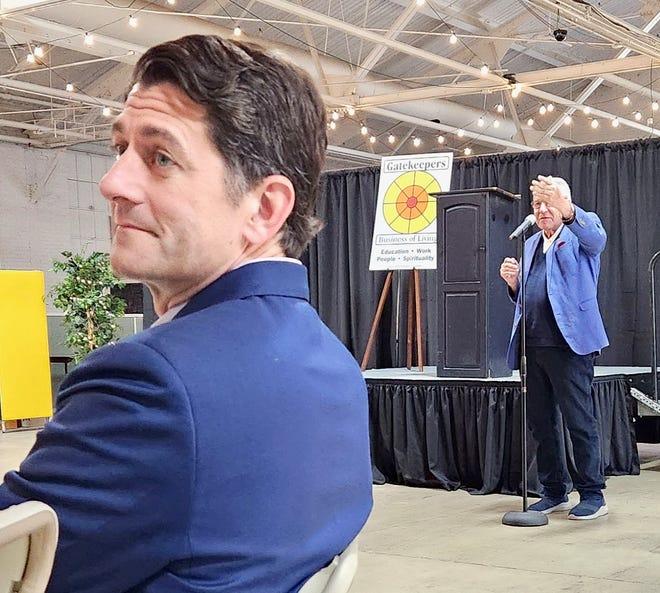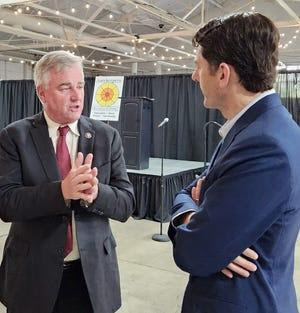By: AIF Staff
Washington, DC – This afternoon at the United States Capitol, a portrait commemorating former Wisconsin Congressman Paul Ryan’s time as the 54th Speaker of the House was unveiled in a ceremony attended by a bipartisan group of Congressional leaders, current and former Members of Congress, and Ryan’s family, friends, and members of his staff.
The four Congressional leaders, Speaker Kevin McCarthy (R-CA), Leader Hakeem Jeffries (D-NY), Leader Chuck Schumer (D-NY), and Leader Mitch McConnell (R-KY), spoke at the event recognizing Ryan’s contributions to the House of Representatives during his time as Speaker from October 2015 to January 2019. The event was also attended by former Speakers Boehner, Pelosi, and Gingrich.
Ryan’s portrait was painted by Leslie Bowman, an award-winning portrait artist from Minneapolis, Minnesota. Bowman was also commissioned to memorialize Ryan’s time leading the House Budget Committee and the House Ways and Means Committee.
The painting of Ryan will hang in the Capitol and is the latest addition to the historic Speaker’s Portrait Collection.

Ryan, who served as Speaker of the House from October 2015 to January 2019, unveiled the portrait with his wife, Janna, and their children: Liza, Charlie, and Sam. Marking the occasion, Ryan said:
“Only in America is it possible to start a career in public service as an intern and end it as Speaker of the House. Only in America could a 28-year-old kid from Janesville, Wisconsin be elected to Congress and go on to serve his hometown for two decades.
“Today is a tremendous honor. It’s an honor that I share with my family, friends, colleagues, and staff without whom none of this would have been possible. Helping my community and fighting for good public policies was the opportunity of a lifetime and I will forever be grateful for the opportunity to represent Wisconsin in the House and to lead the institution as Speaker.”
Reflecting on the three portraits she painted memorializing Ryan’s leadership positions in Congress, artist Leslie Bowman said:
“I believe a great portrait should be a fine painting as well as a physically accurate and emotionally evocative portrayal of the subject. This is accomplished not only by creating a good likeness but also through the ability of the artist to see and reflect the inner qualities of the person she is painting.
“Throughout our history, portraits have been commissioned to honor those who have earned great recognition for their achievements. As a portrait painter I have had the rare, and cherished opportunity to render three visual legacies of Speaker Ryan, a man who serves our nation from the heart.”
For a high-resolution photo of Ryan’s portrait, please click HERE.
###


